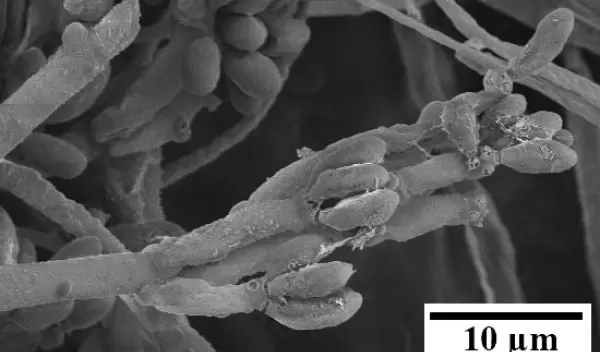
Harnessing Plant-Invading Fungi for Fuel
As gas prices rise around the world, researchers are seeking a potential solution from endophytic fungi--fungi that live inside plants.
While conducting a study on endophytes and their unique products, Gary Strobel of Montana State University and his fellow researchers made a discovery that could very well change our future fuel sourcing.
In a recent study, published in the journal Microbial Ecology, Strobel and his team looked closely at an endophyte known as Hypoxylon, identifying the volatile organic compounds that it produces as well as its antimicrobial activity and genetic makeup. Hypoxylon and similar fungi are common in tropical and semitropical plants and the volatile organic compounds they produce may be useable as fuels or fuel additives.
Living inside plants
Endophytes are able to live in plant tissues without causing any apparent harm. In some cases, the endophyte may even provide some sort of benefit, such as protection from harmful bacteria or pathogenic fungi. Scientists have found that endophytes produce bioactive products that are potentially beneficial for medicine, industry and energy uses.
Strobel and his collaborators excised a Hypoxylon sample from the limb of an evergreen native to the Canary Islands, called Persea indica, and cultured it in a lab to reproduce the fungus and run tests to confirm its identity. Using a scanning electron microscope, light microscopy and molecular tests, they were able to confirm its identity.
The scientists tested the compounds made by the fungi for their inhibitory capabilities to determine if Hypoxylon uses the compounds to protect its host from pathogens. The researchers exposed 10 different fungal pathogens to Hypoxylon cultures that were three, four, five, six and seven days old.
Results indicated that not only do the volatile organic compounds provide antimicrobial protection, but there is also a specific age at which they are most effective. In this study, the six-day-old culture exhibited maximum inhibition of eight of the 10 pathogens. The inhibitory capabilities of the volatile organic compounds support the idea that the fungus has been able to maintain this particular niche because of the protection it provides.
Strange compounds
The range of volatile organic compounds Hypoxylon produces is also significant. One important compound known as 1,8-cineole has a special structure that means it could be used as fuel. This compound and the majority of the compounds produced by Hypoxylon are classified as monoterpenes or their derivatives.
"Monoterpenes are excellent fuels," Strobel said. "In fact, ethanol is a terrible fuel for America since it can cause engine problems, is not energy dense and is made by yeast fermentation. Yeasts only utilize sugars and starch, and the sources of these are also human and animal feeds. Endophytes such as Hypoxylon can utilize agricultural, forestry and urban wastes, grow nicely, and at the same time make monoterpenes, such as cineole."
Special enzymes
The specialized enzymes that Hypoxylon uses to produce 1,8-cineole enable complex chemical processes that are difficult to reproduce in the laboratory, and therefore difficult to adapt for mass production of monoterpenes for fuel. Studying this process could lead to better ways of engineering the fungus for greater hydrocarbon yields.
"Biological pathways leading to production of monoterpenes can be manipulated on a mass commercial scale either by standard microbiological methods involving mutation genetics, or by the use of bioengineering," Strobel said.
The Department of Energy has approved a project to research methods of manipulating the biological pathways leading to the production of monoterpenes.
Advancing alternative fuels
Meanwhile, Strobel and his colleagues are making strides:
- They crafted a method of trapping volatile organic compounds during the fungal fermentation process, so that they can be isolated and studied further for their potential benefits. The trapping is done with a steel column that contains carbotrap materials to capture the hydrocarbon-based compounds.
- They increased production of the fungus in the lab by introducing it into potato/dextrose broth and using standard fermentation procedures.
- By focusing on specific, high-yield fungal strains, the researchers increased the quantity of volatile organic compounds produced--further proof that there is potential for this manipulation to occur on a mass scale.
- The researchers have trapped enough fungal hydrocarbons to make a gasoline blend that, in late 2011, successfully ran a 1919 Galloway engine.
Editor's Note: This Behind the Scenes article was first provided to LiveScience in partnership with the National Science Foundation.


